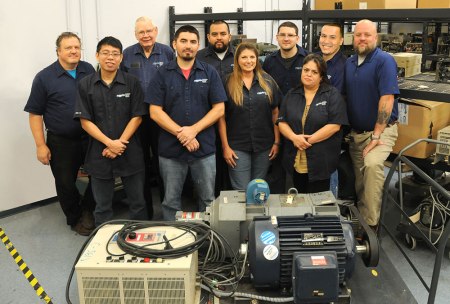
An Experienced, Reputable Repair Company
Working with a company that’s been around for a while has many advantages. They will have seen it all and gained experience in various types of equipment and the problems that occur. If a firm has been around long enough, they will have knowledge, spare parts and documentation for equipment that is obsolete and in some cases, long obsolete. Having the endorsement of major manufacturers doesn’t hurt either.
Convenient Repair Submittal Process
Dealing with repairs is only part of your job, so why work with a repair facility that makes it hard to do business? Online forms, a repair pick-up service and an efficient process from beginning to end makes it easier for you to maintain the equipment at your facility.
Timely Turnaround Options
Emergencies come up from time to time and it’s good to know where to send your parts when you need them repaired and returned fast.
Free Evaluation
You have a part that doesn’t work – you don’t know why, what it will take to repair it or what it will cost. Is it worth repairing at all? Look for a company that can give real answers to these questions without it costing you more money.
Communication on the Progress of Your Repair
When you have equipment needing to be repaired and returned to production, the status of your repair shouldn’t be a mystery. Progress reports help you to plan on having your part out of production and when you can count on its return.
Full Refurbishment of Repaired Equipment
Sometimes repairing the faulty component isn’t enough – you can get a chain reaction of components failing if they are not checked and repaired all at the same time. In addition to a complete repair, removing dust and dirt from the unit contributes to improved performance of your equipment. Make sure to work with a company that returns your equipment clean and fully functional.
Communication with the Technician Who Repaired Your Item
Wouldn’t it be nice if you could speak with the person who actually worked on your equipment? Technicians who are willing and able to discuss your repair and answer your questions should be on the checklist for your preferred repair facility.
Offers a Warranty on All Repairs
Work with a company who takes responsibility and is confident enough in the work performed that they are willing to guarantee it.
Extensive QC Process
High workmanship standards are paramount, which includes extensive testing of repaired equipment before shipment back to the owner. Find out what kind of testing equipment they use, how they measure performance before they determine that a part is fully repaired.
Repair is Securely Packaged When Shipped Back to You
When you take time to ship in a repair and count on that part to work when you get it back, the last thing you want is to open the box and find that your equipment has had a rough ride through the return shipment. A quality repair facility will make sure that your part is packaged to arrive at your door in the same working condition it was in when it left theirs.




Recent Comments